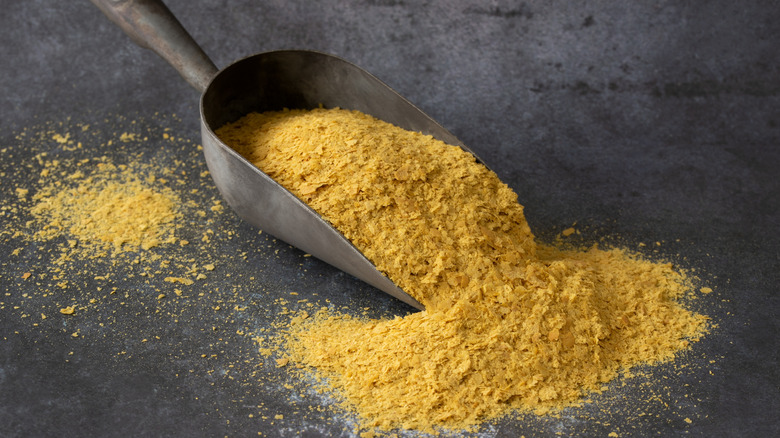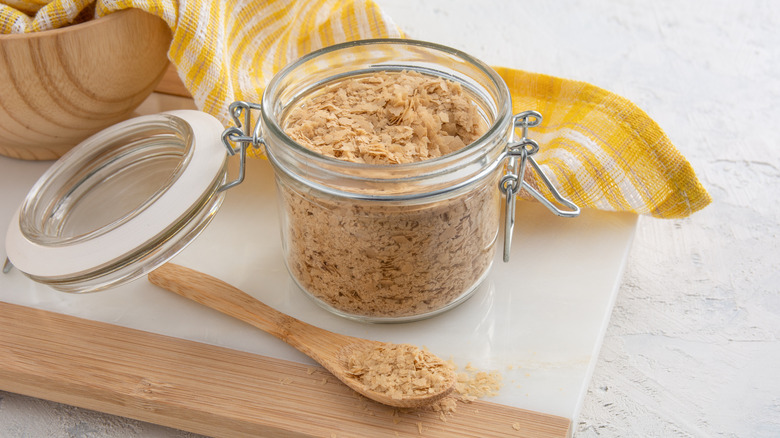One Important Tip To Keep In Mind When Using Nutritional Yeast
Once known almost exclusively among vegan foodies who refer to it as "nooch," nutritional yeast is a seasoning that's growing in popularity beyond just plant-based cuisine. It's protein-rich, and when fortified, is a good source of B12 — the one vitamin that's not available from eating plant foods alone. It's also a cheesy-tasting umami flavor bomb that can enhance omnivore and vegetarian dishes alike.
For tips on working with nutritional yeast for the first time, Food Republic turned to Guy Vaknin, the owner and chef at City Roots Hospitality restaurant group. His Beyond Sushi won first place in the 2024 VegNews Restaurant Awards for best vegan sushi spot, and Vaknin himself was also named in the judges' vote for best vegan chef. His top tip to keep in mind to avoid mistakes when working with nooch is that it "can be an intense flavor, so a little can go a long way."
Vaknin cautions that if you go overboard with too much nutritional yeast "your dish can turn out too powdery and have an overpowering flavor." He notes that its "flavors and textures are very strong" due to it being a concentrated, dehydrated food, so to avoid recipe disasters he recommends to "always start with a small amount, taste as you go, and adjust accordingly." Just like salt and other seasonings, which can easily drown out more subtle flavors, the chef's commonsense reminder is that "you can always add more, but you can't take it out once it's in the dish."
How to use and store nutritional yeast
As for how you use nutritional yeast, it's a very versatile ingredient. Aside from boosting flavors in recipes, Guy Vaknin mentioned that it's perfect as a savory seasoning for your popcorn, for topping salads, or "mixed into dressings or sauces to bring a 'cheesy' quality." For that matter, it's key for respectable non-dairy cheeses. Alongside nuts, it makes for an unbeatable creamy vegan pizza cheese swap, and it's the key to a delicious vegan cashew queso recipe.
Available in flakes or powdered form, nutritional yeast usually comes in shaker bottles, jars, or resealable bags. Sometimes you can find it in bulk, either filled into plastic or paper bags and sold by the pound. According to Vaknin, you should store it in a "dry, cool place in an airtight container." This will prevent it from losing its flavor and keep its texture intact. As long as the jar or bottle you bought it in has a good lid that keeps air and moisture out, you can keep it in the container it came in. Otherwise, your best bet is to transfer it into a clean jar with a screw-on lid or a mason jar-style locking clamp.
Unlike the type of yeast used for baking, nooch is not alive, so it's good for up to two years when stored properly in your pantry. However, you can store yeast in the freezer to keep it fresh longer ... this applies to active dry yeast as well as nutritional yeast.


